With the launch of AMD’s Raider 5000 processor, the desktop version of PCIe Gen4 SSDs has come to the second generation, while Intel is about to launch a new generation of processors supporting PCIe 4.0. The entire PCIe 4.0 ecosystem is more mature than before, and the major SSD manufacturers with their flagship products are hitting the PCIe Gen4 X4 channel totalling 8GB/S The bandwidth limit, SSDs experienced a leap in speed to the 7GB/s threshold.
Samsung 980 PRO Specifications
When people discuss the PRO series of Samsung SSDs, they don’t hesitate to give their praise. The predecessor, the 970 PRO, has also been at the top of the performance pile for a long time with its in-house Phoenix controller plus the premium MLC NANDs.
But the pace of electronic product updates is always so fast, with MLC NANDs gradually being phased out in favour of more technically mature TLC NANDs with higher storage density. Even enterprise SSDs seeking stability is gradually using TLC NANDs, with the more cost-effective TLC NANDs becoming the common type of NANDs used in consumer SSDs, and with PCIe 4.0 being introduced along with AMD’s new platform, SSD sequential read and write speeds are no longer limited to the perceived 3.5GB/s. To continue to consolidate its position, Samsung’s PRO series SSDs need to come up with new products to respond to the market and consumers.
Samsung did not rush into the war when the first generation of PCIe Gen4 SSDs was first released, but let manufacturers such as Adata, Corsair and Galax test the water first, and then officially entered the market when the Main Controller was really mature. Western Digital, a veteran hard drive manufacturer, has also followed the second-generation PCIe Gen4 SSD arms race with Sandisk’s mastering and flash chips. We’re testing the latest versions of the 980Pro 500GB and SN850 500GB from these two manufacturers today.

The main colour of the packaging is still black, with white text and the red colour characteristic of the PRO series, and the theoretical read speed peak is marked in the bottom right corner as a selling point to attract users
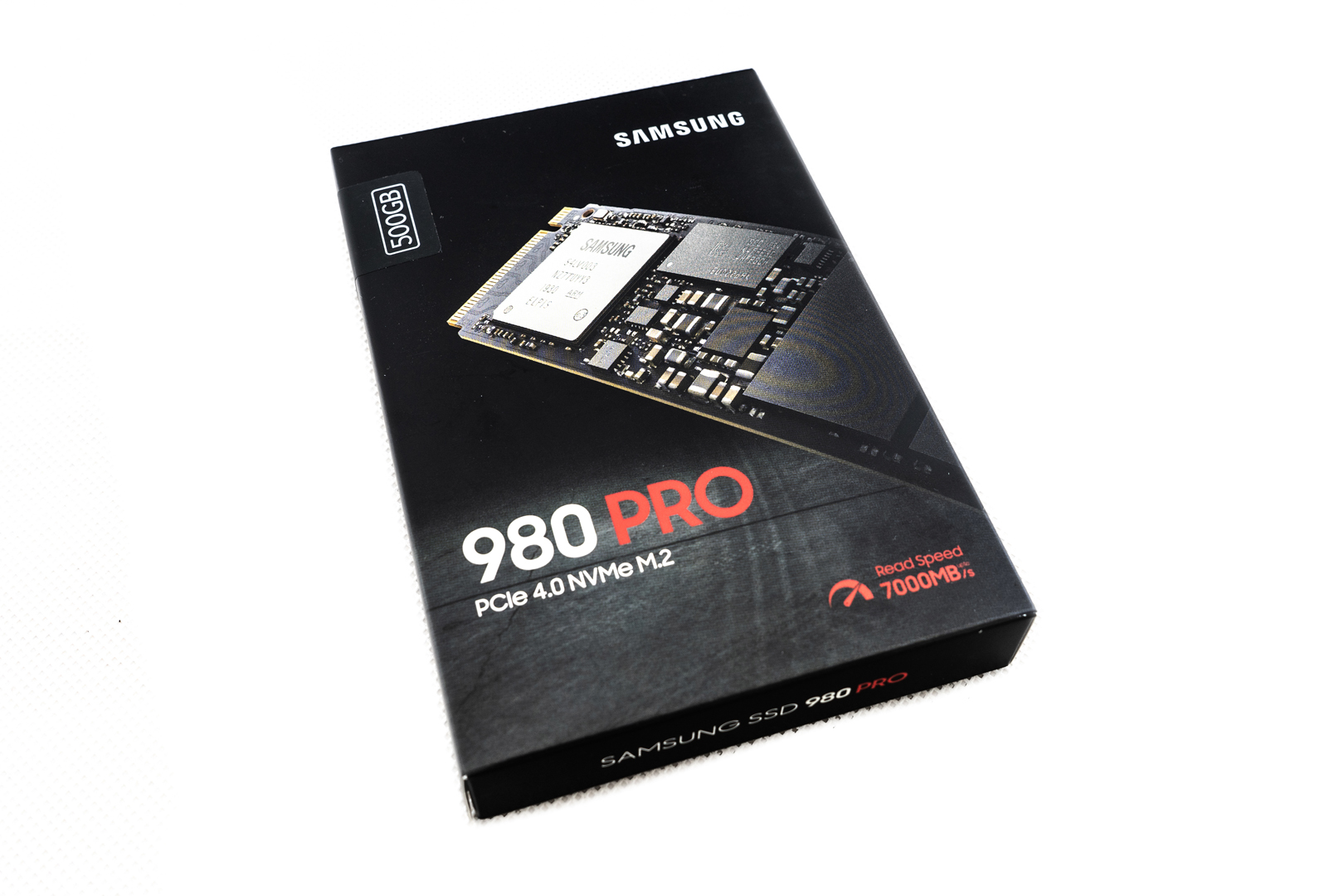
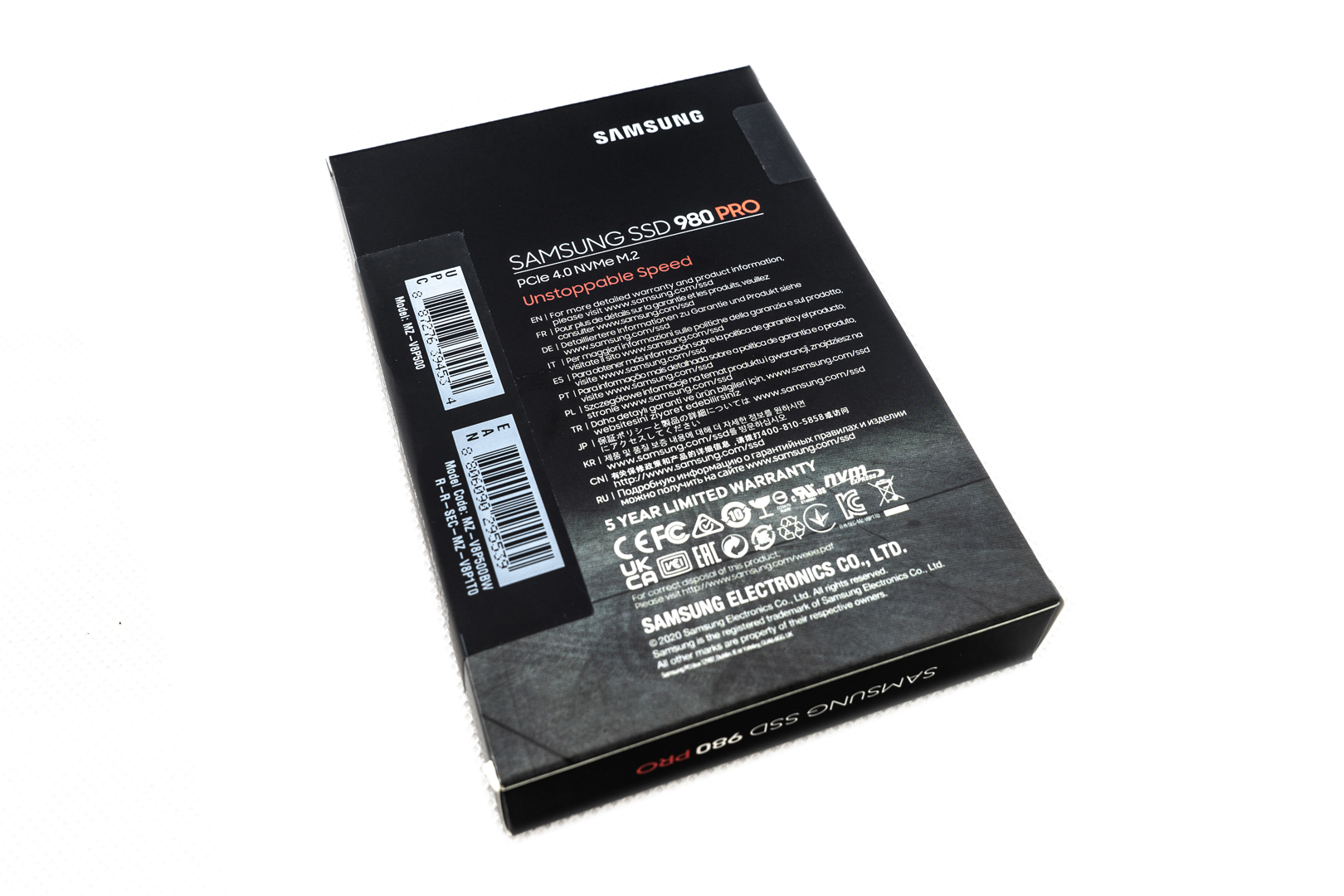
The SSD main body
The 980 PRO’s NVMe standard has been upgraded from 1.3 to 1.3c. Due to the interface upgrade, the 980 PRO’s read performance is far better than that of the 970 EVO Plus and 970 PRO. The smallest SLC Cache capacity is 4GB like the 970 EVO Plus, but the maximum capacity has been increased to 94GB, and due to the SLC Cache Thanks to the SLC Cache, the 5000 MB/s write speed is much faster than the 3200 MB/s of the 970 Evo Plus. Of course, the TLC is only 1000 MB/s raw write speed after the cache is exhausted, which is also faster than the 900 MB/s of the 970 Evo Plus.
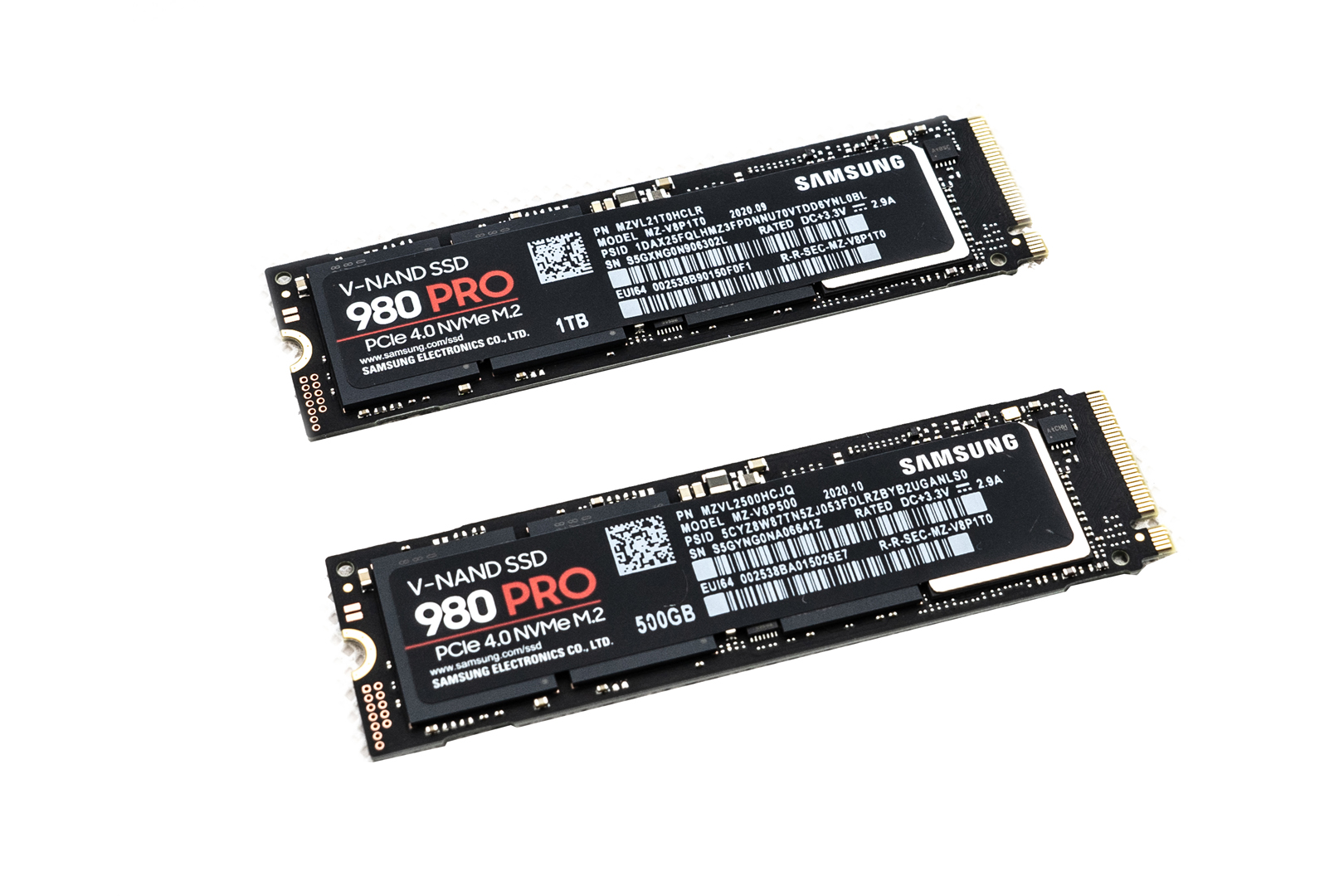
What’s unusual is that we notice this copper foil cooling label on the back of the SSD. The actual value of an M.2 SSD is its compact size, and to put a large thermal waistcoat on a slim drive would defeat its thinness and lightness. The copper foil cooling label used on the 980 PRO and the nickel coating on the master provide good heat dissipation for the NANDs and the Controller chip, and with Samsung’s DTG technology, it is even more stable in harsher usage environments. It is also well compatible with the space of the mainframe or laptop without the use of a bulky cooling waistcoat, and will not fail to fit
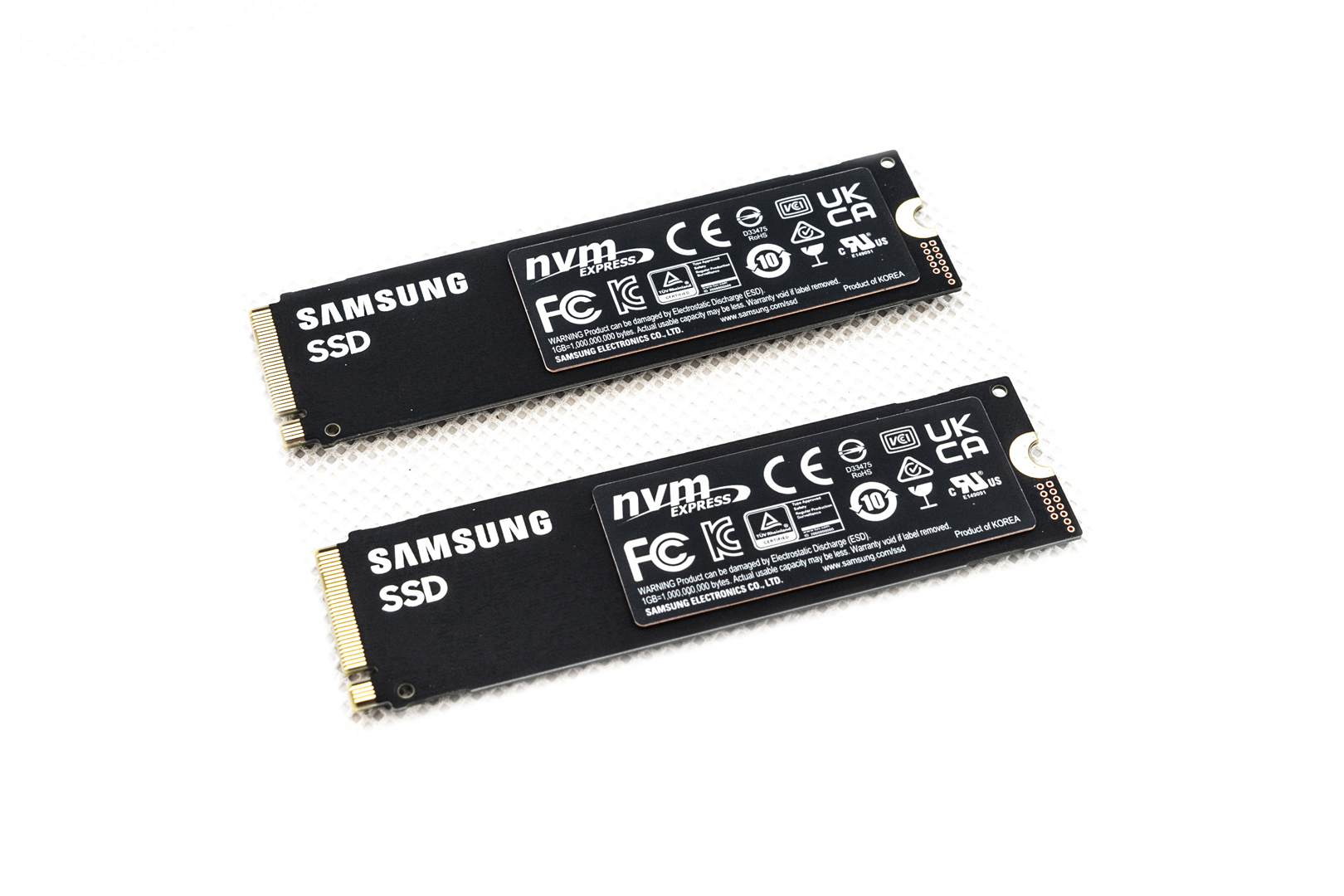
The 980 PRO is powered by ‘Elpis’ controller — Samsung’s first ARM-based 8nm next-generation host chip, which is capable of handling up to four times the data volume of the previous generation ‘Phoenix’ controller when actually processing command sets. 980 PRO also uses Intelligent TurboWrite caching technology, which enables a larger dynamic cache size
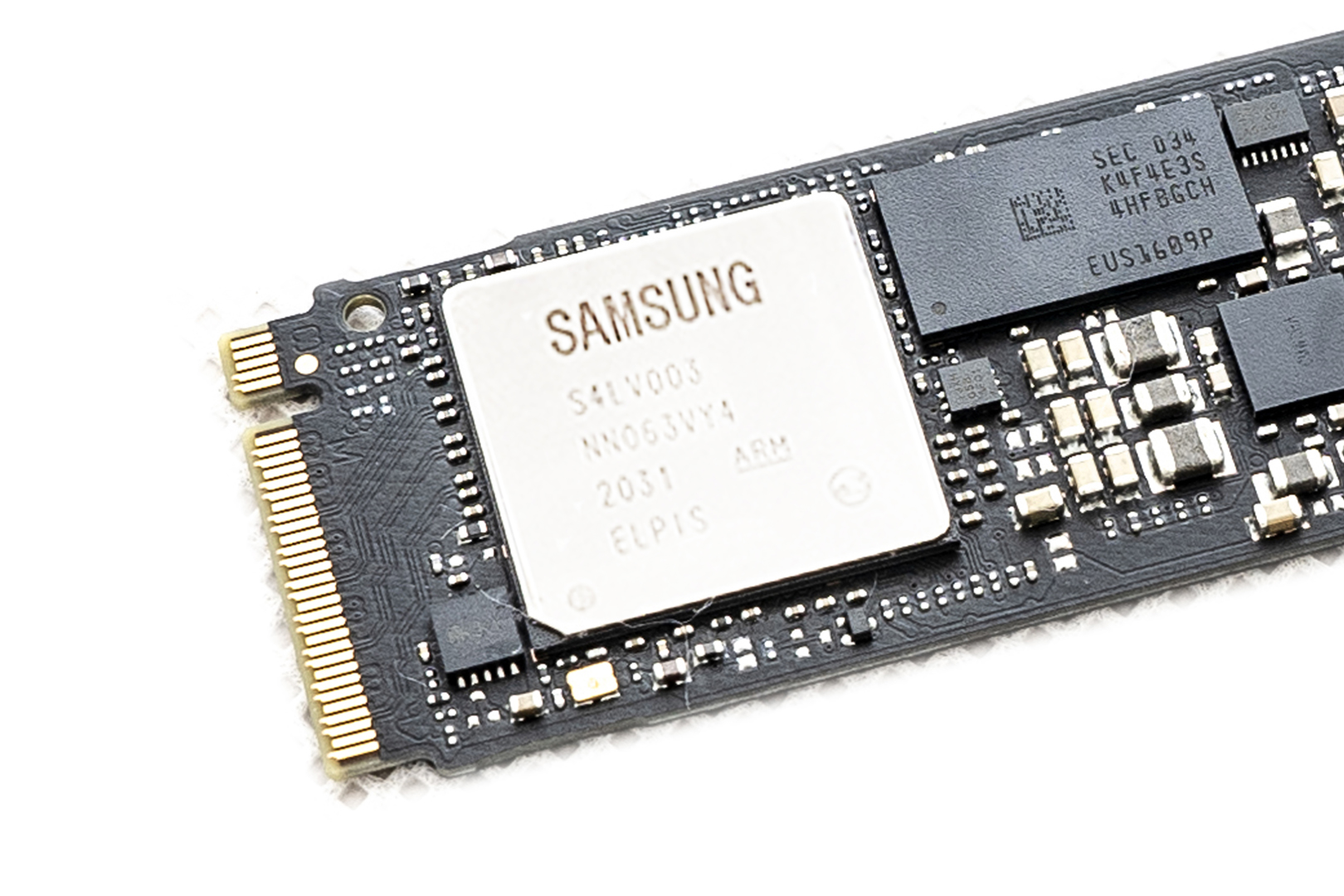
DRAM cache model K4F4E3S4HF-BGCH, 512MB LPDDR4
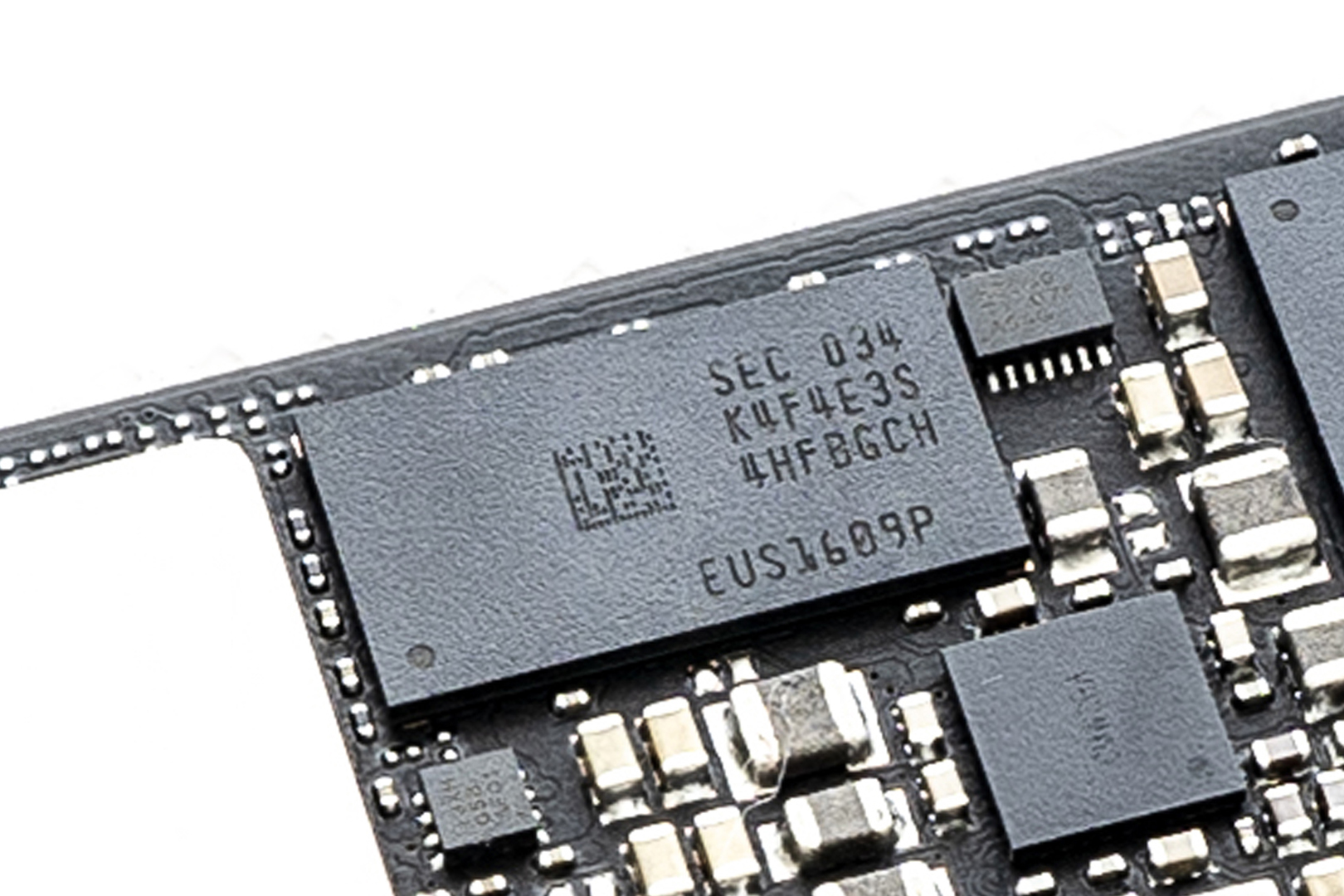
The 980 PRO is powered by Samsung’s latest 6th generation V-NAND flash NANDs, which cost less and are naturally priced lower than the 970 PRO. It has 6900MB/s read speed and 5000MB/s write speed, with random read and write speeds of 1 million IOPS, which is more than 10% faster than the previous generation
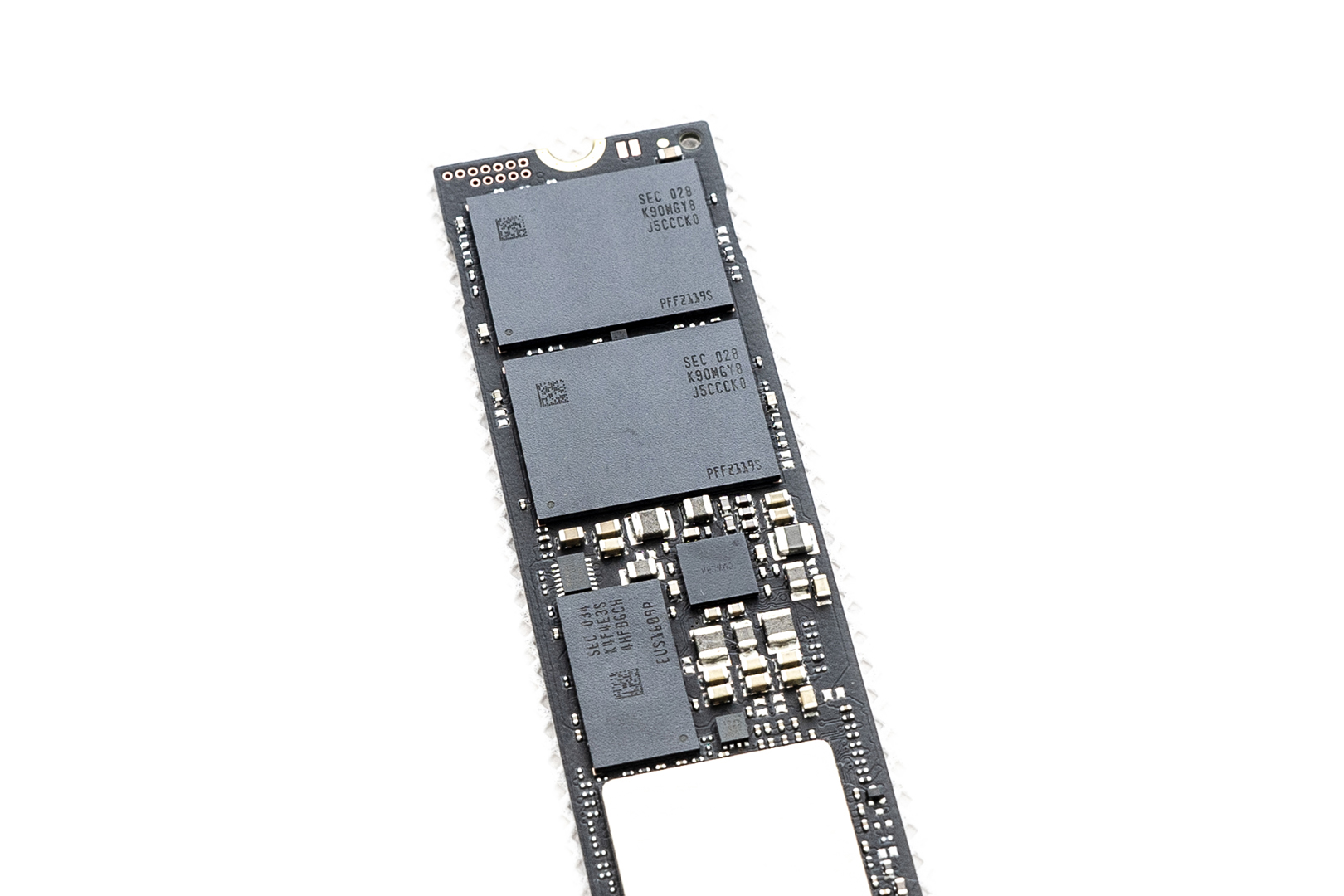
Benchmarks
The Benchmark platform details:
CPU | AMD Ryzen 5950X
MTB | ASUS ROG Crosshair VIII Dark Hero
RAM | G-Skill Trident Z RGB 32G (2 x 16G) 4000 C16
SSD | Samsung 980 Pro 1TB | Samsung 980 Pro 500GB
VGA | ASUS TUF RTX 3080 OC
COL | AMD Wraith Prism
In TxBench tests, the performance is almost impeccable in all areas. Sequential read speeds near the peak of the interface transfer speeds, significantly upgraded random 4K read and write capabilities, and a larger cache space than other SSDs
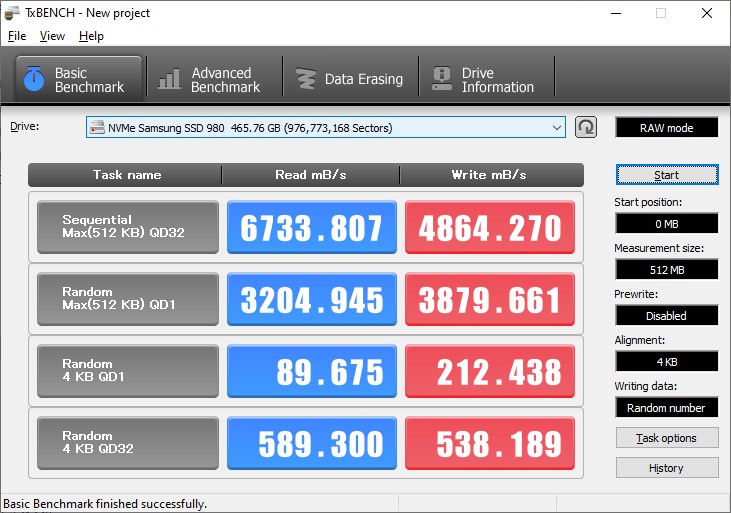
The biggest change from MLC to TLC flash is actually its endurance, with the warranty writes dropping to 300 TBW, although according to Samsung’s official statistics, less than 1% of users will write more than 156 TB over a five-year period. So the 980 PRO’s endurance is perfectly adequate for a consumer SSD.
WD_BLACK SN850 Specifications
It has to be said that Western Digital has caught up early with the 2nd generation PCIe Gen4 SSDs. As a veteran SSD manufacturer, the SN850 is a flagship product after the previous launch of the popular SN750 SSD, and the SN850 is worthy of being the most powerful PCIe 4.0 SSD available, in terms of sustained read and write speeds, dynamic cache and acceptable temperature at full load.
The SN850 500GB is powered by Sandisk 20-82-10035-A1 controller and 2 x 256G Sandisk NAND flash chips

Like its previous SN750 model, the SN850 is also available in a cool black finish, demonstrating its orientation towards enthusiast-level gamers
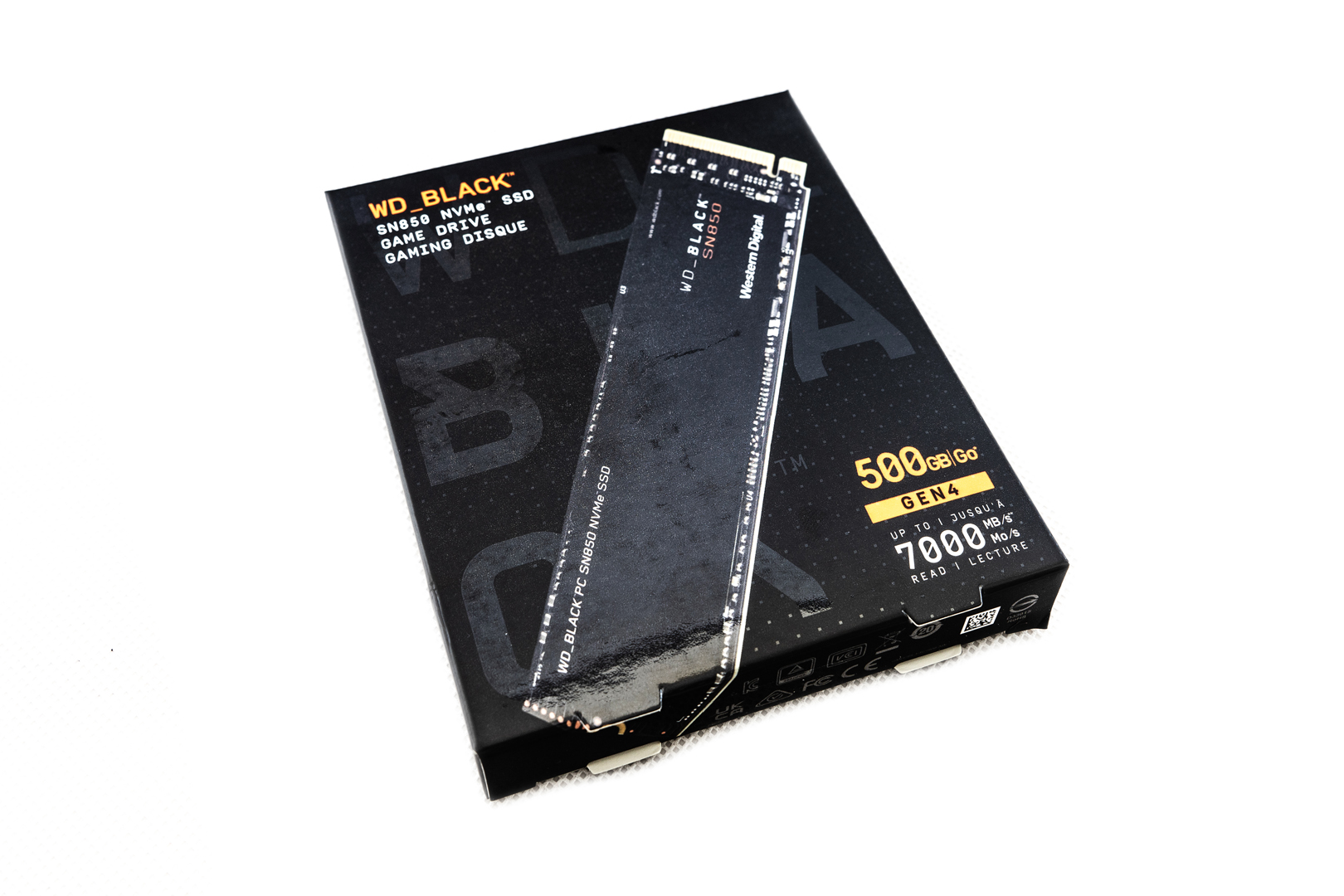

The SN850 uses SanDisk’s 20-82-10035-A1 controller chip
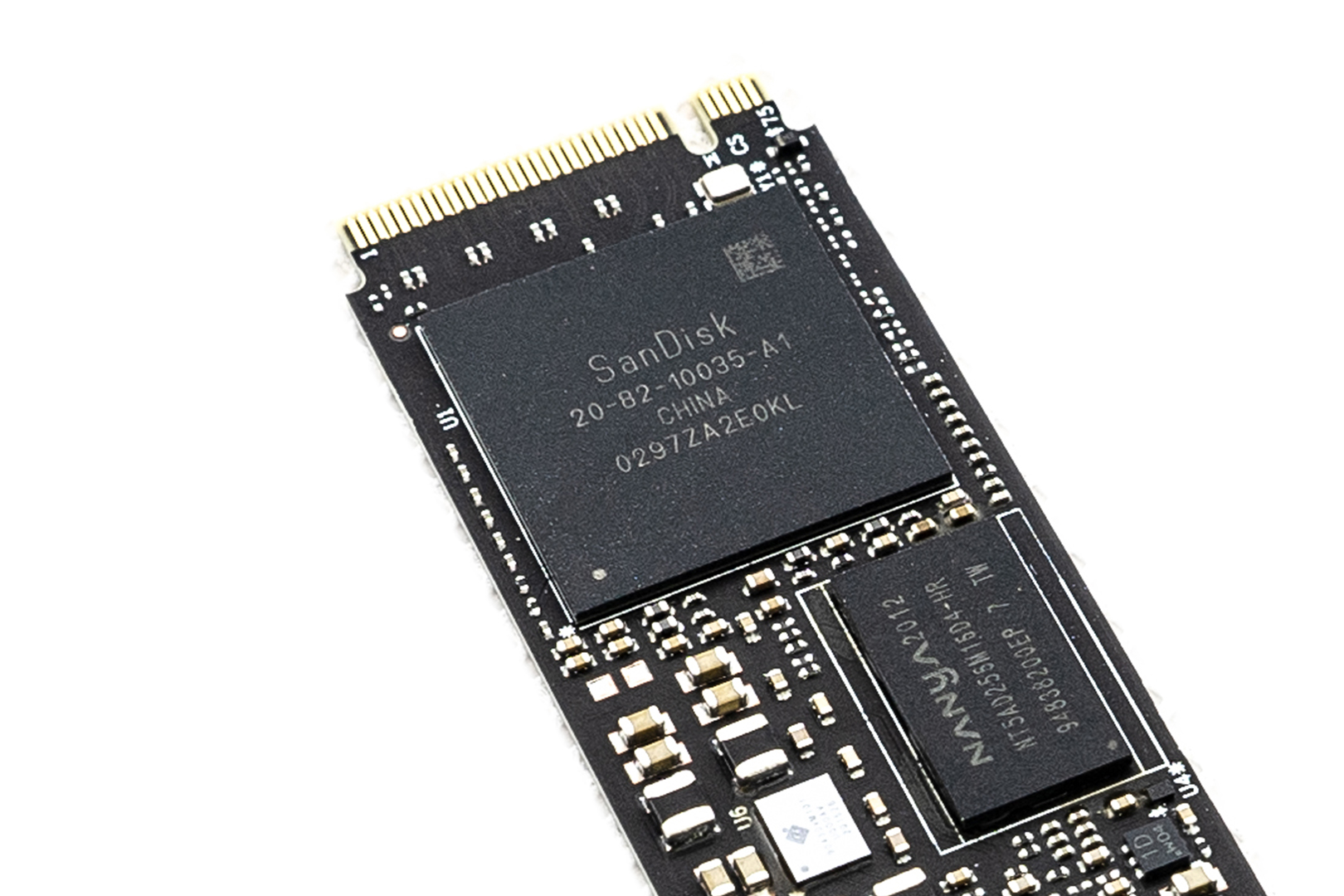
The NAND chips are from SanDisk and two 256GB chips and a total of 500GB
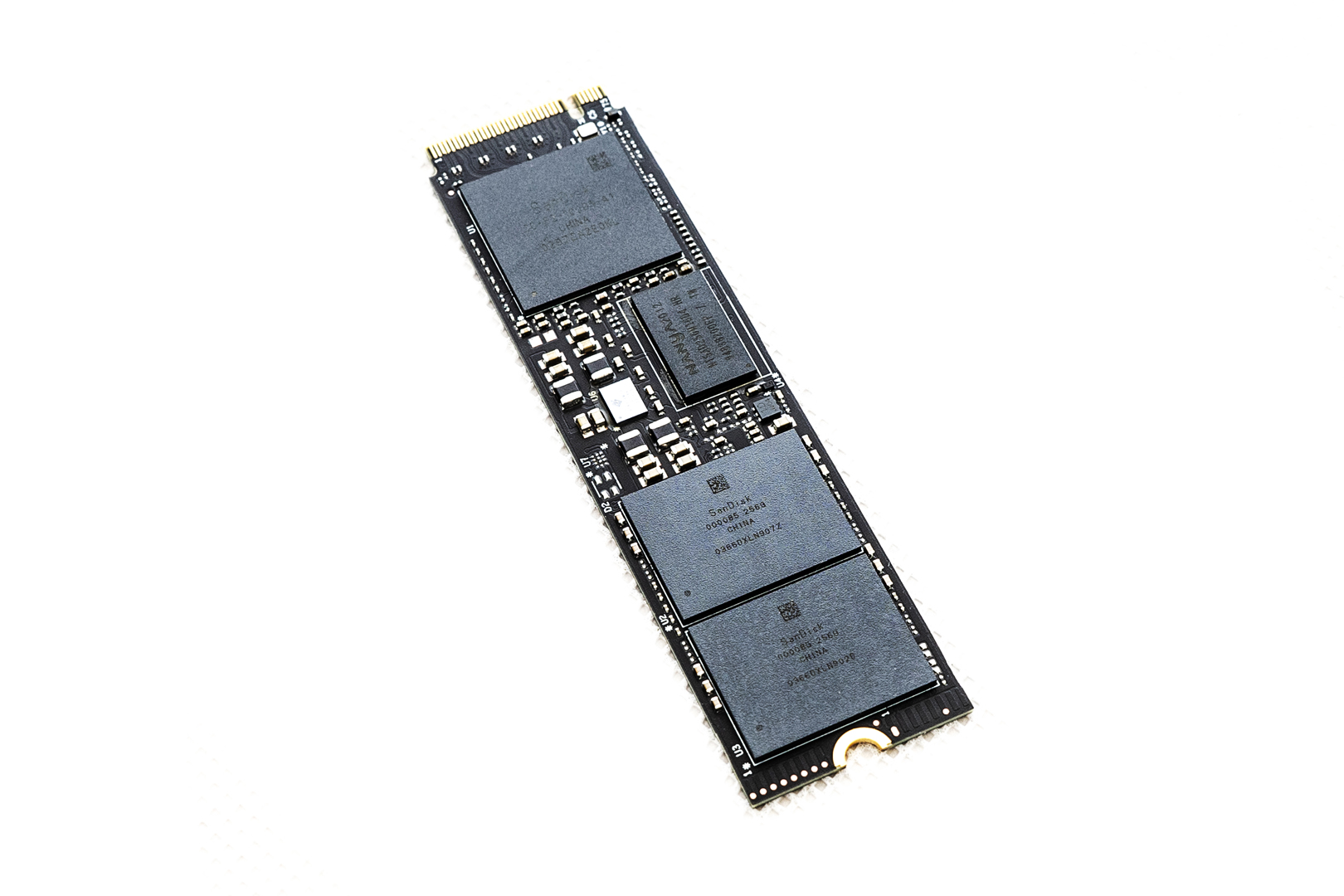
The cache chip uses Nanya’s 256MB NT5AD256M16D4

Benchmarks
The Benchmark platform details:
CPU | AMD Ryzen 5950X
MTB | ASUS ROG Crosshair VIII Dark Hero
RAM | G-Skill Trident Z RGB 32G (2 x 16G) 4000 C16
SSD | WD_BLACK SN850 500GB
VGA | ASUS TUF RTX 3080 OC
COL | AMD Wraith Prism
In various TxBench tests, the performance is quite good in all aspects, especially 4K read and write, which has an overwhelming advantage over Samsung

Besides, the 1TB version of the SN850 is even more powerful, with slightly better read/write and 4K random read/write than the 980 Pro, offering better value for money
Summary
Through the above tests, we found that at the 500GB capacity level, the WD_BLACK SN850 is considerably better than the Samsung 980 Pro in terms of 4K random performance, but reading and writing is still no match for the 980 Pro. We also see that both the SN850 and 980 Pro represent the pinnacle of SSD manufacturing today and are perfectly capable of meeting the demanding needs of enthusiasts. However, in terms of price, both the 500GB 980 Pro and SN850 come in at around AU$225, which is very affordable.
EPIC PC RATE SCORE: Samsung 980 Pro 500GB 87/100
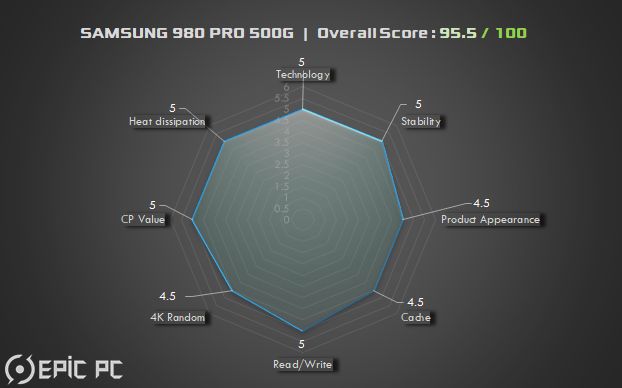
EPIC PC RATE SCORE: WD_BLACK SN850 500GB 87/100

EPIC AWARD: EPIC RECOMMENDED, EXTREME POWER,BEST VALUE

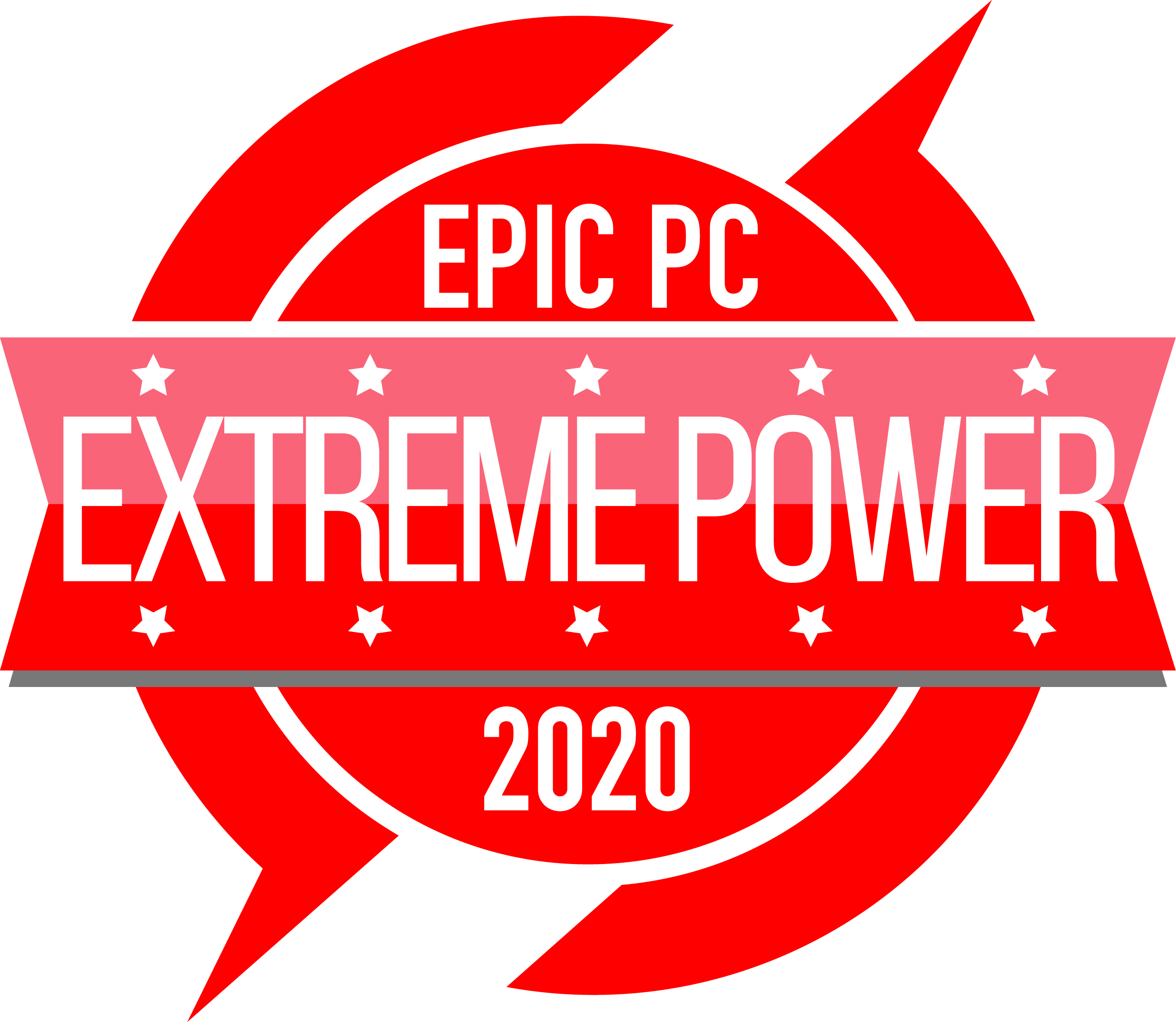

Samsung 980 Pro OFFICIAL WEBSITE: HERE
WD_BLACK SN850 OFFICIAL WEBSITE: HERE

